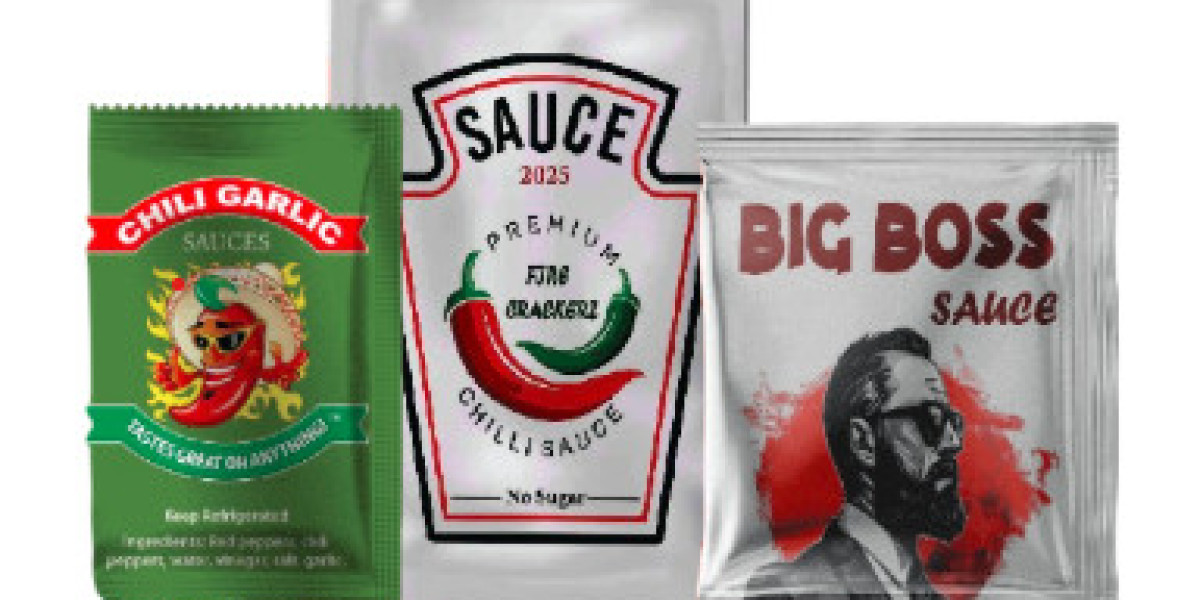Sauces regularly add taste and exhilaration to our food. Whether it’s for dipping, spreading, or drizzling, many humans reach for a sauce packet without giving it much thought. But have you ever stopped to recall how much energy one little packet would possibly comprise? While those small additions appear innocent, they could bring more electricity than predicted. In this post, we’ll explore what’s truly inside a single sauce packet in terms of calories, components, and how it fits right into a balanced food Custom Sauce Packets. By the stop, you’ll understand why it’s worth being attentive to even the smallest objects on your plate.
The Hidden Calories in the sauce packet
Flavorful, convenient, and broadly used. However, they often contain oils, sugars, and different calorie-dense elements. A single packet might seem small; however, depending on the type, it could make a shocking contribution to a wide variety of energy in your meal. While some sauces are light and coffee in fats, others are creamy, rich, and loaded with energy. What many people don’t comprehend is that the calories from those little extras can add up quickly, especially if you use a couple of or combine a couple of types in a single meal.
Typical Calorie Content of a Sauce Packet
The specific quantity of calories in a sauce packet varies primarily based on ingredients, ingredient size, and preparation method.
A single sauce packet typically contains 130 to 150 calories, depending on the type and ingredients.
Fat makes up the bulk of these calories, usually ranging from 13 to 15 grams per packet.
Sugars and simple carbs often add another 5 to 6 grams, increasing energy content without nutritional value.
Daily Intake Consideration
For a person aiming to consume 2,000 calories a day, one sauce packet may want to burn up 7% or more in their day by day limit—simply from a facet object. If you’re eating out and including fries, sandwiches, or other essential dishes, the total calorie depend can climb rapidly. Being privy to this facilitates you in making better decisions, consisting of the usage of the best part of the packet or deciding on lighter alternatives when possible. For an average 2,000-calorie diet, just one packet can account for about 7-8% of your daily calorie allowance. If you’re already consuming other calorie-dense foods, adding multiple sauce packets can quickly increase your total intake. Being mindful of these small additions ensures that you stay within your nutritional goals and avoid unintentional overconsumption.
Tips for Managing Sauce Calories
Managing sauce calories doesn’t mean you have to skip them altogether—it’s all about moderation and making mindful choices. One effective tip is to use less by controlling how much sauce you apply, as even small amounts can pack in calories. Another approach is to dip lightly rather than drenching your food, allowing you to enjoy the flavor without overloading on calories. If you're choosing from different types of sauces, avoid mixing them, as this can easily double the calorie content. Additionally, read labels when possible to check the calorie count and ingredients before using them. Finally, consider opting for lighter alternatives, such as vinegar-based or mustard-based sauces, which typically contain fewer calories than creamier or sweeter options.
Understanding Sauces in a Balanced Diet
Even if a sauce packet carries a hundred and forty calories, it does not mean you should keep away from it completely.
Sauces can be part of a balanced diet if used in moderation.
They add flavor without significantly increasing nutritional value, so they should complement, not dominate, a meal.
High-calorie sauces, such as creamy or sweet options, should be used sparingly, especially if your meal is already rich in fats or sugars.
Common Misconceptions
Even small objects make contributions to your daily consumption. Over time, the “little things” may have large effects. While a single packet might seem insignificant, its calories can add up quickly, especially if multiple packets are used throughout the day. Another misconception is that "it’s just flavor," ignoring the fact that sauces are often made with fats, sugars, and salts, which contribute to their calorie density. Many people also think that "healthy meals don’t need tracking," but even nutritious dishes can be compromised by overloading on high-calorie sauces. Being aware of the calories in sauces is essential for maintaining a balanced diet, regardless of the healthiness of the main meal.
Conclusion
While a single sauce packet may seem small, it can contribute a surprising number of calories to your meal, typically around 130 to 150. These calories mostly come from fats and sugars, offering flavor without providing much nutritional value. If you're conscious of your daily calorie intake, it’s important to be mindful of the sauces you use, as they can add up quickly, especially when used in excess. By practicing moderation, reading labels, and opting for lighter alternatives, you can still enjoy your favorite flavors without overloading on calories. A little awareness goes a long way in keeping your diet balanced. Packaging Companies In UK is home to a wide range of packaging companies that provide innovative and sustainable solutions for industries such as food, healthcare, retail, and more.








